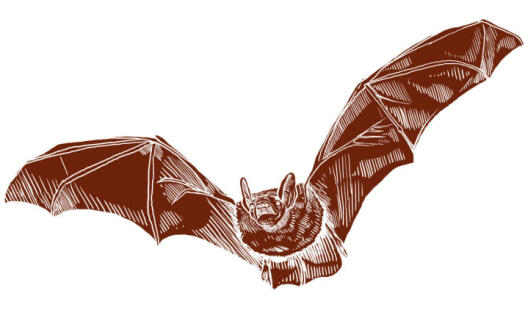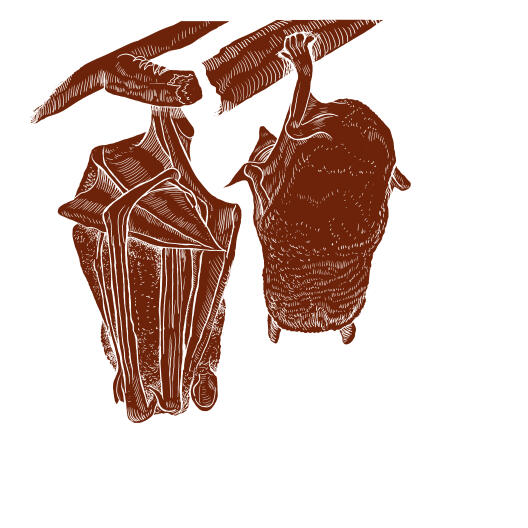

NOCTURNAL ACRO-BATS

A lot of people think bats are spooky. In films, these creatures of the night often flutter across the screen when things get scary. Shades of Dracula! But – in contrast to all the myths surrounding them – bats are fascinating animals. They “see” with their ears and are the only mammals which can actively fly. Not bad, eh?

The insect’s body reflects the bat’s ultrasonic sounds as an echo.© Robert Matzke Ecolocation
Do you know what it means when we say that bats can “see” with their ears? They are nocturnal animals, which is why they don’t use their eyes much. But they still need to navigate, so they have developed the ability to listen to their environment. This helps them to find the entrance to their cave, for example, or detect their prey. Bats emit high-pitched – so-called ultrasonic – sounds which we humans cannot hear with our ears. If the tone the bat produces hits an insect, for example, it comes back as an echo. The bat picks up this echo and can navigate towards it. This happens instantaneously, which means that the bat can change the direction of its flight at any time. What’s special about this is that every echo is different! This means that the echo which comes back from an insect’s carapace sounds different from the one coming back from a person. So bats can recognise quite clearly what is in their surroundings. Thanks to this system, they can detect insects and obstacles and can even estimate how far away they are.

Sleeping upside down© Robert Matzke Sleeping upside down
There are also bats living in this garden here. The bats have not only taken over old woodpecker nesting boxes. There are also several bat boxes which provide a refuge and a home for them. The common and the lesser noctule bat and the common pipistrelle bat all live here.
Can you imagine what the inside of such a bat box looks like? Bats don’t sit like birds do, in self-made nests or on branches: they hang upside down, perfectly relaxed! And what happens when they fall asleep? Even then, they don’t fall down. And why not? The claws on their feet curve automatically through the bat’s weight, enabling it to stay suspended while it sleeps. It only uses its muscles when it wants to release itself from this position.

Hibernation© Robert Matzke Hibernation
Just like other native mammals, such as the common dormouse or the hazel dormouse, bats hibernate. During the cold season there are not enough insects for a bat to feed on. However, hibernation is not real sleep such as we humans know it. The bats fall into a kind of dormant state, but they still register what’s going on around them. In this state they wind down important functions such as their heartbeat and their metabolism. Their body runs in economy mode, enabling them to save energy and conserve their strength. As a result, bats can survive for around five months, living on just the reserves of fat they have consumed beforehand. Bats hibernate from late November to late March, seeking out tree cavities, rock caves or cellars for the purpose, and they often cuddle up close to each other.
WHAT'S THE ANSWER?
1. Take a guess: how small is the world’s smallest bat?
2. And now: how big is the world’s largest bat?
3. Up to how many ultrasonic sounds can a bat emit in one second?
4. How many midges does a bat eat in a night?
SOLVING
1. The world’s smallest bat is Kitti’s hog-nosed bat. It lives in Thailand, weighs only two grams and is three centimetres long. This makes it lighter than a sugar cube, and it would fit inside a matchbox.
2. The world’s largest bat comes from Australia and is called the “ghost bat”. It can grow to a size of 14 centimetres and it weights between 130 and 220 grams – which is more than a big bar of chocolate.
3. Bats emit up to 200 sounds per second in order to navigate. That’s 12,000 sounds per minute. We humans say between 90 and 120 words per minute.
4. One single common pipistrelle bat can devour between 1,000 and 2,000 midges per night, and the species known as Daubenton’s bat eats over 60,000 insects between April and October!

